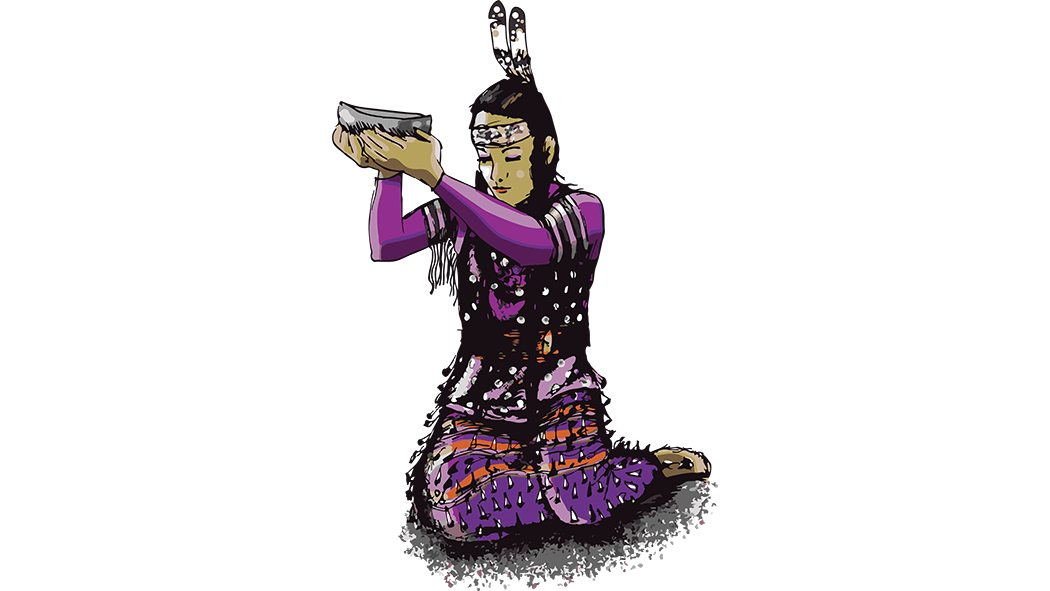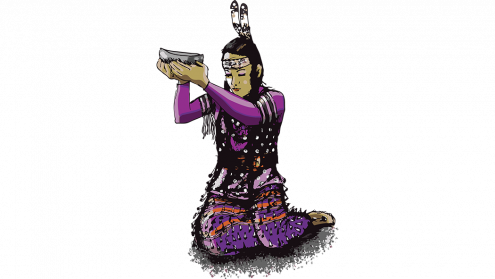
October 27, 2022
Over the past year, the Indigenous Cancer Program team, a part of the South West Regional Cancer Program (SWRCP) that operates through the London Regional Cancer Program (LRCP) at London Health Sciences Centre (LHSC) has been collaborating with a local Ontario Breast Screening Program (OBSP) site to bring culturally respectful education and mammography screening to Indigenous communities in the South West region.
In June 2022, the Indigenous Cancer Program at the SWRCP, Chippewa of the Thames Health Centre and the Strathroy Middlesex General Hospital (SMGH) re-initiated mammography screening events for local Indigenous women after a pause due to pandemic responses seen earlier in the year and in 2021.
Leading up to the screening event day, the staff at SMGH committed to and completed three Indigenous Relationship and Cultural Awareness modules that are available through Ontario Health/ Cancer Care Ontario (OH/CCO). In addition, two Indigenous Health sessions were presented to SMGH staff by Dr. Samantha Boshart, Physician and Regional Indigenous Cancer Lead, SWRCP, and Lisa Jackson, Indigenous Resource Consultant, SWRCP. These learnings were important to complete so that staff were prepared to treat Indigenous patients with culturally sensitive and respectful care.
Anna Newell, Manager of Diagnostic Imaging and Cardiac Services for the Middlesex Hospital Alliance (MHA) shares that, “It’s been eye-opening working with Indigenous communities and taking the education courses. Alongside Lisa and Dr. Boshart, this is work we are committed to as an organization. We want to provide women who attend these events with culturally respectful care, in a safe space, to improve the low screening rates for Indigenous women in our region. We want indigenous women to have the same access to quality care that is available to all other women.”
Sadie Lee, Senior Lead Sonographer, Breast Assessment Program, Diagnostic Imaging at SMGH says, “The education provided was important for staff to understand the challenges these communities are facing. The modules were completed by all of our staff because it is important for the department as a whole to understand why Indigenous women have lower screening rates so we can provide respectful care. We are committed to this work.”
Transportation is arranged and costs offset by the Indigenous communities to make these events more accessible for women to attend. With staff prepared, private space reserved, and transportation arranged, the event was well attended. The women noted that they felt comfortable at the event because the screening process was explained and the event was well planned and made safe. The women in attendance also enjoyed the opportunity to connect with one another during the day. Lisa says, “I’m grateful that we’ve been able to make some positive change within the system by providing this equitable and culturally safe access to necessary preventative care.”
“Every single event we learn something new from the feedback and it gives us an opportunity to learn and grow,” Sadie explains. “We had a ceremony at this recent event that we hadn’t done before. We learned why it was important to start the day with ceremony as well as the reasons why it’s important to have an Elder at these events. The women shared they would like to be provided additional education and we are planning to incorporate that in future screening events.”
Planning for a fall screening event is underway. After the success of these events, at the request of the Nation, the next screening event will take place for women between the ages of 30 – 50 and will include traditional teachings on women’s health by a Knowledge keeper.
Why this work is important and personal:
Chantel Antone, Director, Office of Inclusion and Social Accountability (Indigenous Health) at London Health Sciences Centre (LHSC) who worked as the Indigenous Navigator for the SWRCP and planned, coordinated and connected these communities to get the breast screening events off the ground, says:
“When I think about where we were, where we are, and about the future delivery of health care services to Indigenous people, I think about how we, as a health care system, need to overcome the ways in which Indigenous people have been harmed and don’t want to participate in invasive screening in unfamiliar environments. This is what this work is accomplishing. We’re creating private and culturally safe places. We’re bringing traditional aspects like Traditional Teachings from Elders into these events. So, when someone asks what does culturally responsive care look like? This is an example of what it looks like to me.”
Lisa Jackson talks about the importance of these events for her and for the Indigenous women they serve:
“Things can’t just be status quo in terms of our approach to cancer screening, and for health care service delivery in general, for Indigenous people. The outcomes for cancer in Indigenous people are much worse in comparison to the general population – we can’t lose our people so young anymore. Providing culturally sensitive care is important as it will feed into the social determinants of health and those affect Indigenous peoples’ health and health outcomes. Prevention and education are just pieces of a whole, and we can make efforts to continue to change the current state of things. From the Chippewa screening event in June – there’s now interest from the community to host more events. They see what it looks like to have that safe space and see what those screening processes are like. This work I’m doing is for us now, but also for seven generations to come. Equitable access to health care has been withheld from us through the effects of colonization - that’s the bigger picture. This work is very important and there needs to be more of us so we can move it forward. We’re building on the shoulders of amazing people already.”
Dr. Samantha Boshart shares why this work is personal for her and effective for Indigenous communities:
“This work is really personal. My mom passed away from colon cancer and did not get screened. It is important work to provide the opportunity to Indigenous women to take health care in their own hands. This is what’s effective with our communities – ask the people how they want it and figuring out how to provide care in a way that meets their needs. It’s important that the health system asks Indigenous women to provide direction on how to work with our communities. We are a good source of information – we know a lot about our communities, our communities trust us and we have the ability to affect change. The women are matriarchs of their families. Indigenous women are here and willing to work hard to save our people from early death. Life spans are a lot shorter for us and part of that is due to worse disease outcomes such as cancer and I don’t want that to be the case any longer.”
